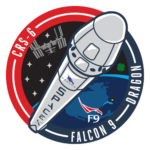Table of Contents:
Opinions, rather than the lovers of the great Mary MacGregor song from 1976.
Two opinions, both relating to space flight.
On the one hand: I love all the business to do with sending hardware into space. The rocketry, the engineering, the testing, the monitoring; all the sort of stuff that I have gazed upon in awe for decades, from the mid to late 1960’s when both America and Russia sent people into space, then ultimately to the Moon.
On the other hand: Musk.
Space, the final frontier
My childhood consisted of all the excitement and hype of fulfilling President John F Kennedy’s 1962 pledge to put a man on the Moon before the decade was out. It was a very big thing back in the 1960’s. I was allowed to stay up and watch the Moon landing live – the excitement of being allowed to stay up until gone midnight at eight years old, to witness Neil Armstrong’s fist step alone was excitement enough. It was way past my bedtime, after all! 😁
From then, at eight years old, it was absolutely fascinating to me. The computers, mission control, the very serious people sat with their cigarettes and their headsets monitoring things on screen and read outs. James Burke and Patrick Moore narrating every single step of the mission along the way. It was the sort of thing that I’d only seen on television up to that point, mostly in Doctor Who. I was drawn to it like a moth to a flame and it instilled in me a life-long love of anything to do with space.
My love of space-orientated TV series and films probably stems from this early exposure to space travel. Series (and films) like Star Trek, Doctor Who, For All Mankind, Battlestar Galactica – all space-related and I love them all.
After the hype has gone
When the celebrations and congratulations had calmed down a bit after the first Moon landing, both NASA and the Soviet Union continued their space programmes throughout the decades. I kept an eye on it all, following Apollo, the Space Shuttle, various satellite missions, including MIR and SkyLab – all the way up to the latest Artemis missions. In the days before YouTube, you had to hope that one of the UK TV channels would broadcast any launches or landings – which they did up to a point.
By the late 1970’s NASA had built and launched the Space Shuttle program, launching winged, crewed spacecraft into space and bringing it back like a glider. Named STS (Space Transport System), this was at the time the world’s only reusable spacecraft, which of course, garnered huge attention at the outset. Once a few successful launches and returns were performed, it was hardly reported on, until something went wrong.
The other companies
Up until 1980, NASA had near enough the monopoly on manned spaceflight (discounting the Soviet Union at this time, as we had no information whatsoever about their spaceflights!). Arianespace, a French company, began operations in 1980 and became the first commercial space flight company, mostly for launching communications satellites and hardware to Earth orbit.
Once Arianespace was up and running, it opened the doors for plenty of other companies to start manufacturing space hardware. Satellites: communications, GPS, spy and monitoring (to name but a few) were all manufactured and launched. Space Stations: the Russian MIR and the US Skylab, to name but two.
It all became a bit mundane after a while and so the main media stopped reporting on any launch events. With the introduction of the Internet however, monitoring of any space events became a lot easier. We could even watch launches on YouTube!
Space today
Today – in 2025 – I am spoilt for choice. YouTube means I can watch even the most obscure launches in real time if I choose to do so. The plethora of quite diverse companies that are manufacturing space hardware now – including UK-based ones – has risen many fold, meaning that their websites provide me with updates and information until it’s running out of my ears.

NASA have Artemis: a Moon exploration program that kicked off with an un-crewed launch in 2022. This was an incredibly exciting time for me, as we could follow the progress of the mission via a plethora of media outlets every single second of the way (which, incidentally I did!). And it went to the Moon. Something that mankind had not done for many years.
That was Artemis I. The Artemis II mission – which is the crewed mission to orbit the Moon and return – is projected to launch in April 2026.
What, when now?
This, from Wikipedia:
Orion’s first launch on the Space Launch System was originally set in 2016, but faced numerous delays; it launched on November 16, 2022 as the Artemis I mission, with robots and mannequins aboard.
As of January 2025, the crewed Artemis II launch is expected to take place in April 2026, the Artemis III crewed lunar landing is scheduled for mid-2027, the Artemis IV docking with the Lunar Gateway is planned for late 2028, the Artemis V docking with the European Space Agency’s ESPRIT, Canada’s Canadarm3, and NASA’s Lunar Terrain Vehicle is planned for early 2030, and the Artemis VI docking which is expected to integrate the Crew and Science Airlock with the Lunar Gateway station is planned for early 2031.
After Artemis VI, NASA plans yearly landings on the Moon from then on.
So I’m going to have to wait until at least mid-2027 before I see any Moon landing shenanigans. Now I fully understand that all of these systems are extremely complicated and require extreme testing before any people can be transported in them to the Moon. I get that and I get that all that testing and whatnot takes time. Better safe than sorry, n’est-ce pas?
The SpaceX Dilemma
(Which would probably be a good title for an episode of Doctor Who!)
SpaceX

In 2002, along came Elon Musk and SpaceX. His vision was to decrease the costs associated with space launches and to ultimately pave the way to a sustainable colony on Mars.
After a bit of a shaky start (with Falcon 1), in 2012, the Falcon 9 launch vehicle was successfully launched and along with the Dragon 1 capsule, began supplying the ISS (International Space Station) with goods and chattels under contract from NASA. Since 2012, SpaceX began developing the re-usable launch technology, resulting in the Falcon Heavy rocket, with its reusable first stage. From 2020, the Dragon 2 manned capsules have been delivering people and supplies to the ISS.
2020 also saw the start of the Starship program – at the moment the largest launch vehicle in history and aims to fully realise the company’s vision of a fully-reusable, cost-effective and adaptable launch vehicle. SpaceX is also developing its own space suit and astronaut via its Polaris program as well as developing the human lander for lunar missions under NASA’s Artemis program.
That timeline tho’
In just over ten years, SpaceX has become the most prolific launcher of space hardware in the world. The development of new tech to accommodate the reusable rocket – including the innovative “chopstick” system to catch launchers – has meant that the company has grown rapidly to become the go-to company for space. Whether you want to launch satellites or people, SpaceX have the technology to do so.
Look at that timeline! It is a very timeline, especially compared to that of NASA who – given that they’ve already put several people on the Moon – should be the most experienced at all this space travel malarkey and if anyone, should have been developing this technology years ago.
Getting to the point…
However.
The point is this: I love, Arianespace, Firefly Aerospace, and the myriad of other companies that manufacture space hardware. I love NASA, the Chinese National Space Administration, Roscosmos, the Indian Space Research Organisation and all the other countries that have a space program.
And yes, I also love SpaceX. I love the rapid development of technology, the innovative ideas, the coverage that they provide (free of charge) for every launch. But it is run by Elon Musk.
Musk
Musk is the owner of – and the Chief Technical Officer of – SpaceX. He is also known to have a not inconsiderable amount of input into the development of technology at SpaceX, meaning that he drives the timelines and drives the development.
Musk is a controversial figure. Some of that controversy I suspect is of his own making: engineered to keep him in the spotlight. But he has undoubtedly made more than a few controversial public statements in his life and a few controversial company takeovers (Twitter, for one). His treatment of his staff has been thrust under the spotlight on many an occasion and let’s not leave out his current alignment with US President Trump.
There are a great many people that have more than a negative view of Musk – some for very good reason. Some of which reaches the fair shores upon which I reside. It seems that there isn’t a week that goes by where I can read an article in the news about his latest transgression.
But then I look at SpaceX. SpaceX does appear – at least on the face of it – to be doing a good job advancing technology and space travel,both quickly and safely.
Torn…
Torn… between two opinions.
As much as I disapprove of Elon Musk (even though he’s done nothing whatsoever to affect me personally), I can’t but admire him for the drive behind SpaceX. Without that drive, SpaceX wouldn’t be launching regularly and wouldn’t be developing tech like the chopsticks system.
As much as I love all of the other space administrations around the world and the many and diverse companies that make hardware for space, the development and the technology seems to take forever before we – the public – see it come to fruition. We know for example that China has an active space program and that they are planning Moon landings, but when? We don’t know.
The ultimate question
The ultimate question I have to ask myself is: does my disapproval of Musk mean that I no longer support SpaceX?
Unfortunately, I don’t know the answer. Yet.

